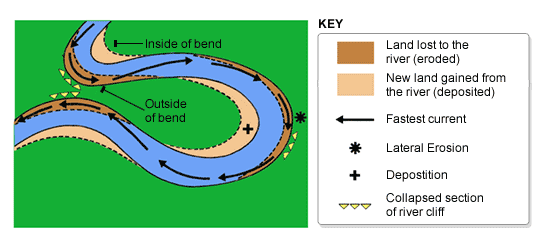The Sabie River is part of the Komati River System. The catchment area of the Sabie-Sand system is 6320 km2. It is one of the most biologically diverse rivers in South Africa, with generally good water quality. East of Komatipoort it joins the Crocodile River [Rio Incomati] before flowing into the Indian Ocean near Maputo.
Your tasks – the C.S.I. work!
At GZ you will find yourself looking at the Sabie River that flows past the Lower Sabie Rest Camp.
In order to substantiate your visit and be able to claim this EarthCache a number of questions need to be answered and submitted to the cache developer, via e-mail, to “cincolcc [at] gmail.com”
1 – In your own words explain what the river looks like at the time of your visit. Comment on the sandbanks and how have they been formed - what do you think they are composed of? [If the river is in flood you will not be able to see the sandbanks then you can estimate how far the water’s edge is from where you are standing.]
2 – Is there any evidence of the river undercutting the banks? Think about what you might have seen en route to GZ as well. What effect will this undercutting have on the formation of the sandbanks themselves?
3 – Would you classify this as an old, mature or a young river system? Why do you say so?
4 – What is the elevation indicated on your GPSr?
5 – Describe any other interesting things you saw or experiences you had on your journey to GZ –whichever road you traveled on you were next to the Sabie River. Photos are always welcomed in the logs but please don’t post photos of the river itself.
6 – What surface are you standing on at GZ?
NOTE: You may log your visit prior to approval, but e-mail submissions that do not meet the above criteria will be deleted.
How are Rivers Formed?
Are you aware of the fact that rivers are one of the sources of fresh water? The points of origin of most rivers is in the mountains. The Sabie River has its origins in the Drakensberg Mountains to the west of the Kruger National Park.
A natural stream of fresh water flowing downhill from its source in the mountains to meet an ocean or a lake is known as a river. River water is confined to a channel or a stream bed.
Rivers are formed when group of springs and streams known as headwaters (which have their origin in the mountains), flow down to form a large stream or springs. The stream bed of a river lies between the banks of a river. The large streams are called a river while the smaller ones are called creeks, brooks, rivulets, or tributaries. The rivers form a major component of the water cycle. The water in a river is accumulated from precipitation of ground water and also through the release of stored water in natural reservoirs such as glaciers.

Formation of Rivers
Every river in this universe has a point of origin and gravity plays a significant role in the direction of the flow of a river. In areas where the climate is humid, the point of origin of the rivers is from springs. Other points of origination of rivers are marshes, lakes, and melting glaciers. Thus, the two main sources of water that replenish rivers is either the melting snow or the rainwater. This process is known as the precipitation.
Another major source of river water is the rain. When it rains heavily in the hills, the water trickles down the steep slopes and flows onto a riverbed. Initially, the water from the hills flows in an evenly distributed fashion and is called surface run-off. When this water flow travels a certain distance, it begins to flow in parallel rills and also gathers momentum. Soon these parallel rills unite to form a stream. As the rills converge with the stream, a brook is formed. This brook flows through a valley. The volume of the water in a brook becomes constant when it gains sufficient volume of groundwater. The brook becomes a river when the water level in the brook increases.

Types of Rivers
Rivers are classified on the basis of the sediments they carry. The sediment carried is controlled by factors such as climate, geology, and the stream gradient. Here are a few classifications of the different types and forms of rivers.
Youthful River
A youthful river has a steep gradient and very few tributaries. A youthful river is bound to flow quickly and swiftly.
Mature River
A mature river is less steep and flows slowly compared to youthful rivers. There are many tributaries that feed a mature river. The river will meander and is generally slow moving and sediment can deposit on its banks.
Old River
An old river has a low gradient and is dependent on flood plains. Old rivers are generally very wide, deep, slow flowing with a gradual gradient.

Rivers have been one of the sources of food, water, and transport since pre-historic times. Rivers aid the cultivation of crops by supplying water. Historians claim navigation of rivers date back to the Indus Valley Civilization. Rivers of the world are the major source of fresh water and they sustain their own food chain.
In the case of the southern area of the Kruger Park the Sabie River is its “life blood”! Not only does it supply much needed water for the vegetation of the area but also water for the animals. Closer to the ocean it is an important source for agriculture in neigbouring Mozambique.

